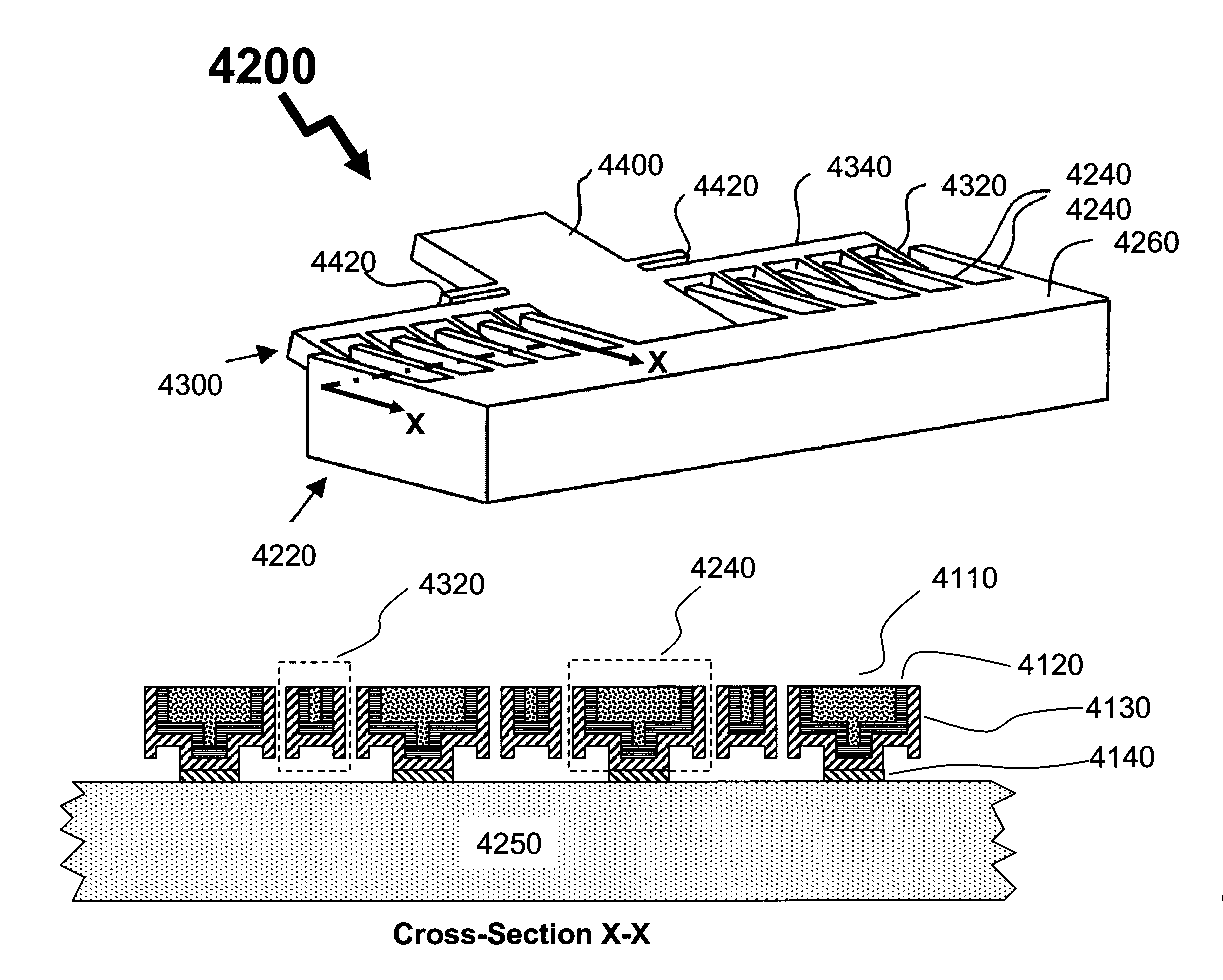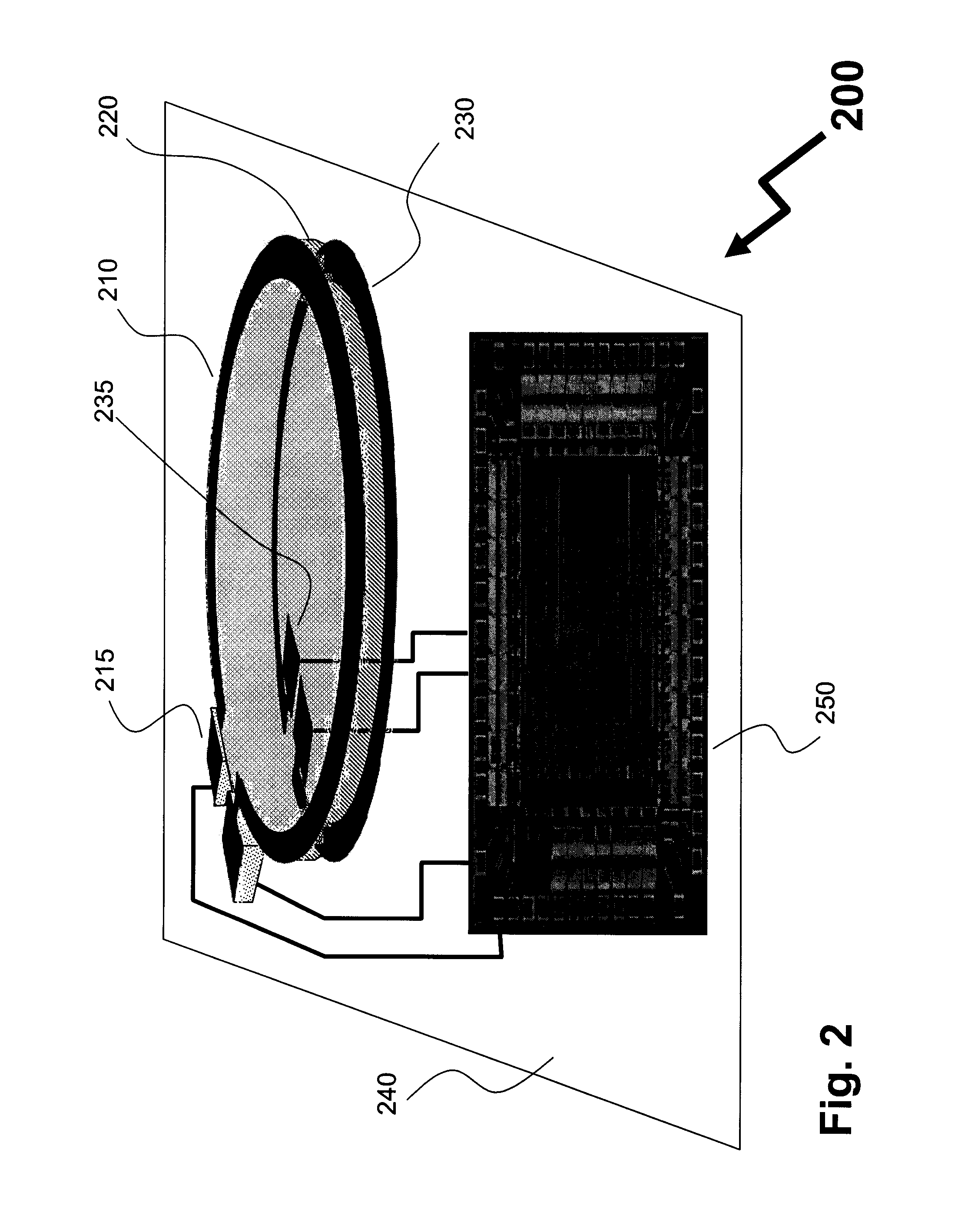Low temperature ceramic microelectromechanical structures
a microelectromechanical and low temperature technology, applied in the field of manufacturing mems devices, can solve the problems of power consumption, process variability, and difficulty in gearing the mems fabrication process towards general applications, and achieve the effect of reducing power consumption, reducing manufacturing costs, and improving manufacturing efficiency
- Summary
- Abstract
- Description
- Claims
- Application Information
AI Technical Summary
Benefits of technology
Problems solved by technology
Method used
Image
Examples
Embodiment Construction
[0035]Referring to FIG. 1 shown is a material selection chart 100 for MEMS device implementations. Plotted onto the material selection chart are a range of different materials including metals, dielectrics, ceramics and polymers. Each material being represented by a point on the X-Y graph wherein the X-axis is density and Young's modulus is the Y-axis. The data being plotted is according to the work of V. T. Srikar et al “Materials Selection in Micro-Mechanical Design: An Application of the Ashby Approach” (J. Microelectromechanical Systems Vol. 10, No. 1, pp. 3-10). As acoustic velocity, a factor governing the resonant frequency of structural materials, is determined in accordance to Equation 2 below shown are lines of constant acoustic velocity 131, 132, 133 of 1×103 ms−1, 3×103 ms−1, and 1×104 ms−1 respectively.
υ=Eρ.(2)
[0036]As evident from the material selection chart, different types of materials tend to be grouped together. Ceramic materials 140 tending to appear in the top le...
PUM
 Login to View More
Login to View More Abstract
Description
Claims
Application Information
 Login to View More
Login to View More - R&D
- Intellectual Property
- Life Sciences
- Materials
- Tech Scout
- Unparalleled Data Quality
- Higher Quality Content
- 60% Fewer Hallucinations
Browse by: Latest US Patents, China's latest patents, Technical Efficacy Thesaurus, Application Domain, Technology Topic, Popular Technical Reports.
© 2025 PatSnap. All rights reserved.Legal|Privacy policy|Modern Slavery Act Transparency Statement|Sitemap|About US| Contact US: help@patsnap.com



